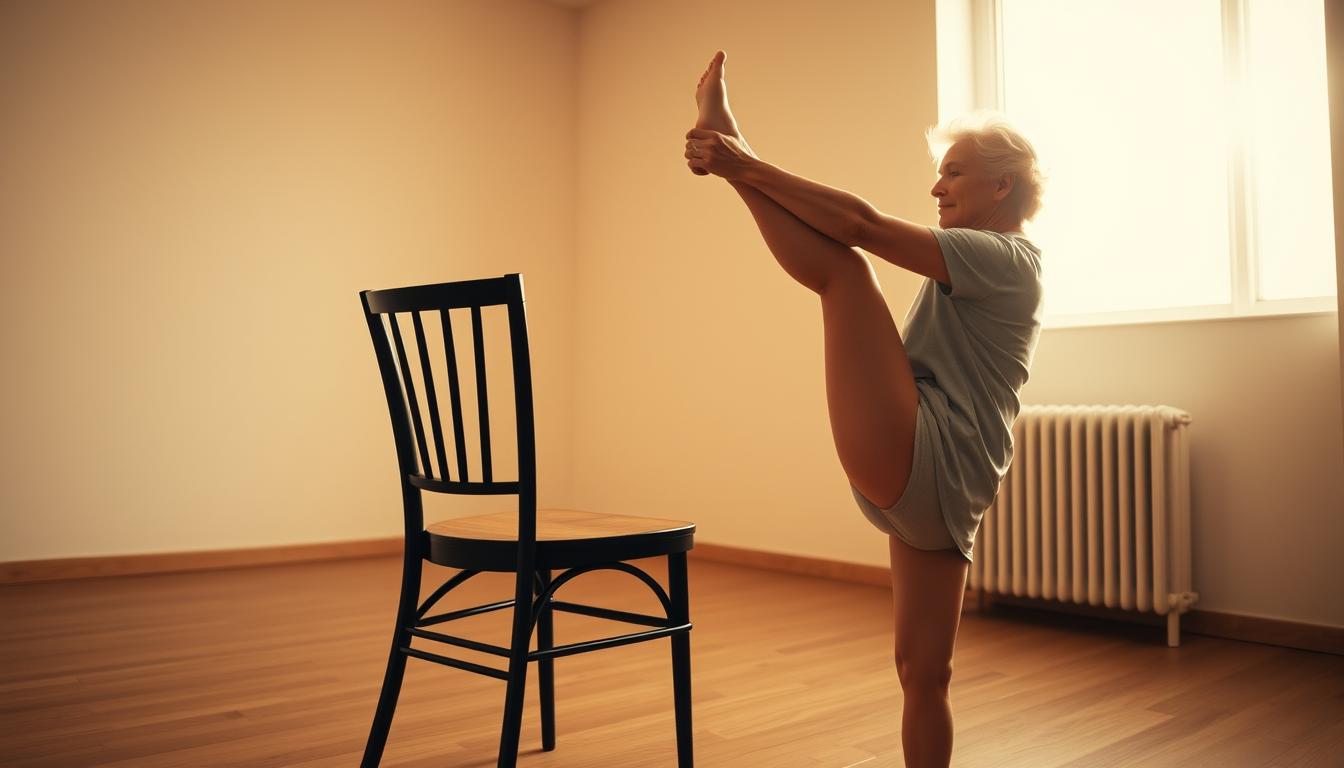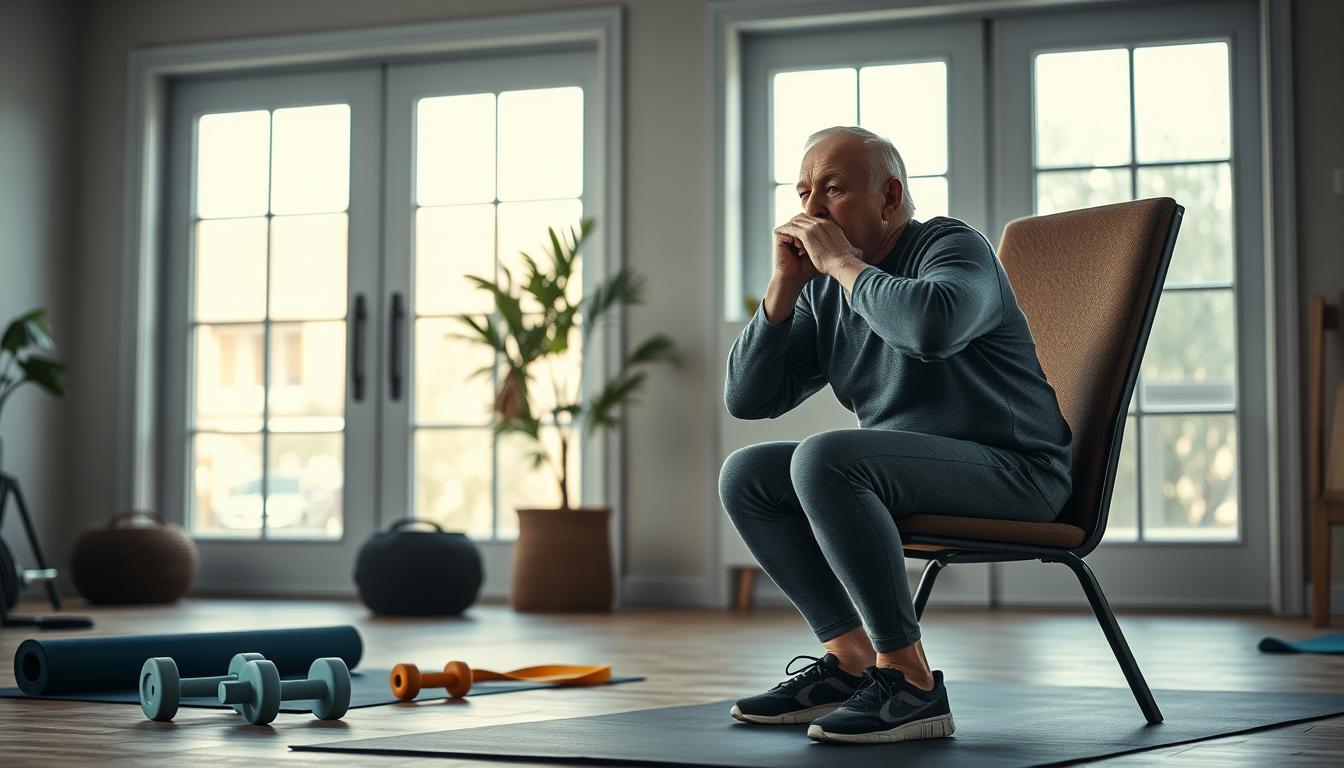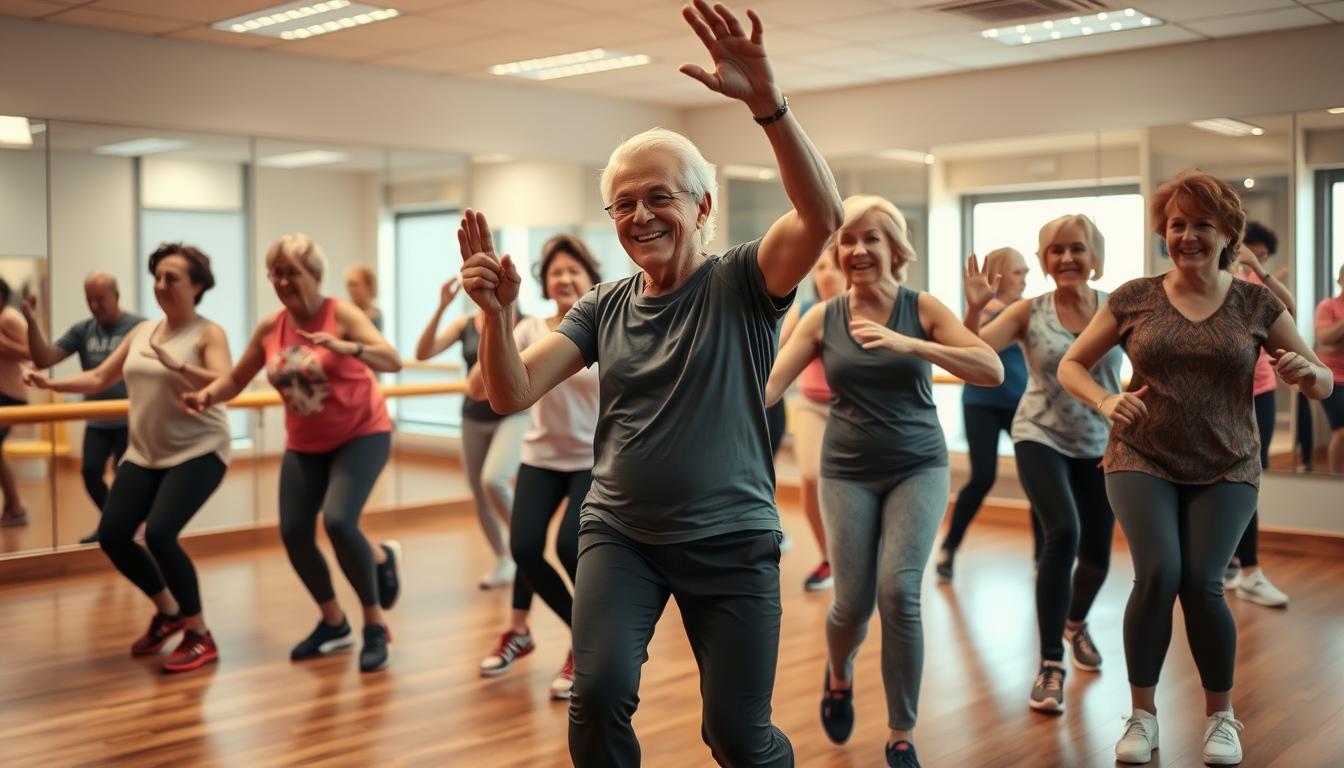Want to tighten your midsection without wrecking your back? You’re not chasing a six-pack – you’re after a stronger, more functional core that makes everyday life easier. Let me show you how simple tweaks to classic moves can deliver big results, no fuss required.
Think of your core as the body’s built-in seatbelt. A study from Johns Hopkins Medicine found that strong core muscles reduce back pain by 30% in adults over 60. That’s why I’m obsessed with exercises where your feet stay flat on the floor – like seated marches or modified planks. You’ll feel the burn where it counts, not in your joints.
Here’s my golden rule: time beats counting reps. Try holding a bridge position for 15 seconds while breathing steady. If you can chat with your neighbor during the move, you’re doing it right! These “stealth workouts” fit perfectly between crossword puzzles and morning coffee.
Pro tip from my physical therapist friend: “Your lower abs aren’t shy – they’re just waiting for the right invitation.” That’s why I love leg slides (feet flat, knees bent) – they’re like a secret handshake with your deepest core muscles. Ready to stand taller and bend easier? Let’s turn that belly into a powerhouse, not a pain magnet.
Cracking the Core Code: Why Your Midsection Matters
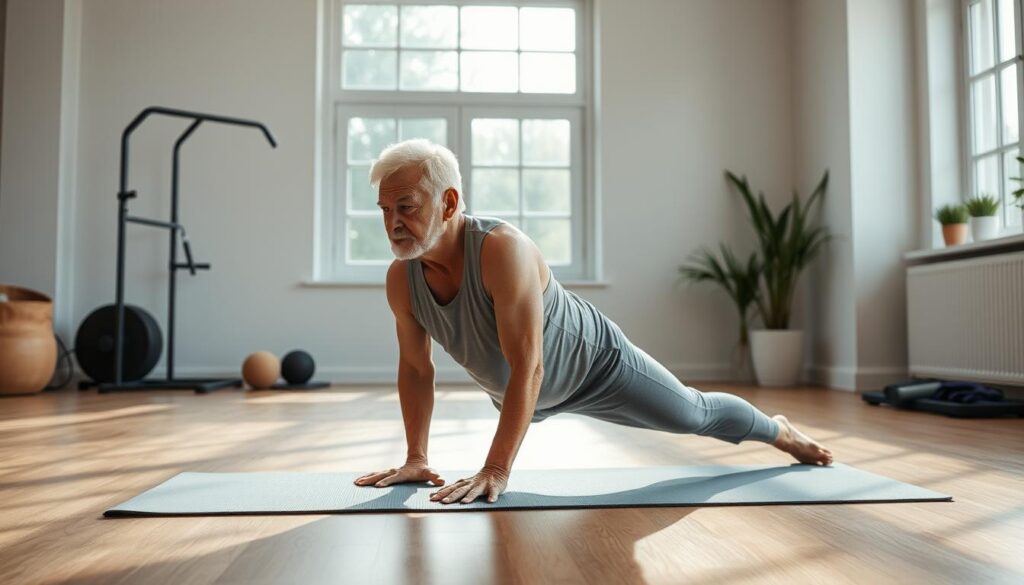
Ever wonder why bending feels tougher as the years stack up? Here’s the scoop: your core isn’t just about looks—it’s your body’s command center. Think of it like the steel frame in a skyscraper. Without it, everything wobbles. My neighbor Linda learned this the hard way after her hip surgery. “I could walk,” she told me, “but turning to grab groceries? Forget it!”
The Undercover Heroes You’re Ignoring
Most folks focus on the “six-pack” muscles up front. Big mistake. The real magic happens lower down—those sneaky muscles hugging your pelvis. They’re why you can step off curbs without face-planting. Fitness pro Bethanie Bayha puts it perfectly: “Your lower abs work overtime when you’re not looking. Treat them right, and they’ll return the favor.”
Here’s the kicker: You don’t need fancy gear. Try this next time you sit down—press your elbows into the chair arms while lifting one knee an inch. Feel that subtle tension? That’s your hidden core crew clocking in.
Mobility’s Secret Sauce
Strong core muscles don’t just prevent spills—they upgrade how you move. Picture reaching for a top shelf. If your trunk’s shaky, your shoulders do all the work. But when your midsection’s engaged? Suddenly you’re reaching higher, smoother, safer. It’s why golfers swear by rotational exercises to keep their swing powerful.
Pro tip: Alignment matters more than reps. Tuck your head back like you’re holding an orange under your chin. This simple tweak activates deeper muscles during exercises. Before you know it, tying shoes becomes a piece of cake instead of a backache trigger.
Effective Abdominal Workouts for Seniors: Targeting Core Muscles
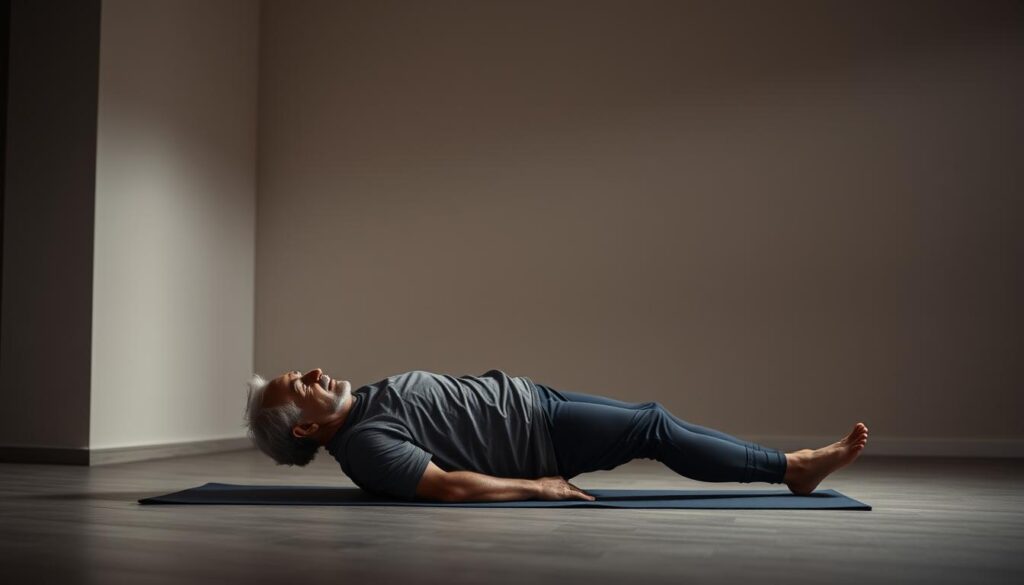
Timing is everything when building a resilient midsection. Forget counting reps—your muscles respond better to smart duration. I’ve seen clients transform their stability by simply holding moves longer. Let’s talk strategy.
Your New Best Friend: The Clock
Start with knees bent, feet flat on the floor—this protects your back. Try a modified plank: elbows under shoulders, hips lifted. Now tuck your pelvis like you’re zipping up tight jeans. Hold 20 seconds. Breathe normally. Feels different, right?
Here’s why it works: Time under tension wakes up sleepy muscles. Golfers use similar golf fitness strategies to maintain rotational power. Your version? Seated marches with 3-second pauses. Lift one knee, count “one-Mississippi,” lower. Repeat 8x per side.
| Move | Duration | Focus | Pro Tip |
|---|---|---|---|
| Pelvic Tilt | 30 sec | Lower Core | Press low back into floor |
| Heel Slides | 45 sec | Hips | Keep shoulders relaxed |
| Side Lean | 20 sec/side | Obliques | Stack knees bent at 90° |
Set a kitchen timer—it keeps you honest. Start with 3 sets of 15-second holds. Progress to 30 seconds when you can chat during the move. Your hips will thank you when reaching for that dropped remote!
Pro tip: Pair these with daily activities. Do heel slides during phone calls or pelvic tilts while waiting for coffee. Consistency trumps intensity every time.
Chair-Based and Floor Modalities: Variations in Movement
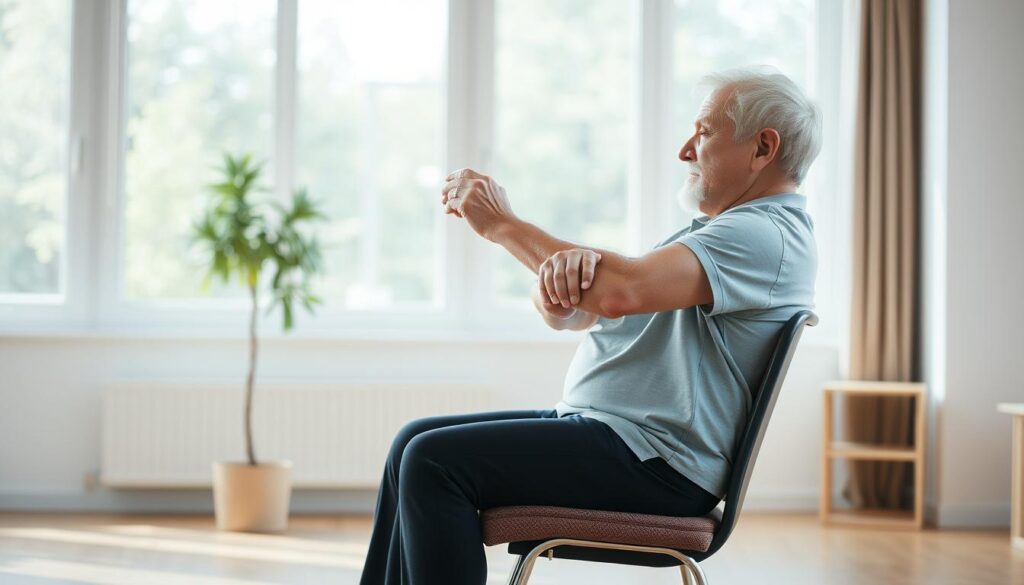
Your kitchen chair isn’t just for sitting—it’s a secret weapon for core strength. I’ve seen clients transform their stability using nothing fancier than a dining room seat. The trick? Treating everyday furniture as exercise equipment that works with your body, not against it.
Chair planks: tightening the entire trunk without fuss
Grab a sturdy chair (no wheeled office chairs!). Place both hands on the seat, feet flat about hip-width behind you. Now push through your palms until your body forms a straight line from heels to shoulders. Hold 10 seconds while whispering “I’ve got this” through clenched teeth. This fires up your transverse abdominals—the body’s natural corset.
Seated knee lifts for stabilized balance
Sit tall like you’re balancing a book on your head. Grip the chair’s sides lightly. Lift one knee two inches—pause—then lower. Alternate legs like you’re marching in slow motion. Pro tip: Press your feet into the floor between lifts to engage hidden lower-core muscles. Do eight per side while watching Jeopardy—it’s a no-brainer!
Oblique side bends to fortify your edges
Rest fingertips behind your ears, elbows wide. Now tilt your upper body right like you’re reaching for the salt shaker. Return to center, then repeat left. Keep those feet flat and knees bent at 90 degrees. These gentle rocks strengthen the obliques that help you twist to check blind spots while driving.
My neighbor Ed does these moves using his patio recliner. “Feels like cheating,” he jokes, “until I try getting up from the couch without groaning.” That’s the magic—your body works smarter when you meet it where it’s at.
Maintaining Proper Form: Sidestepping Back Strain
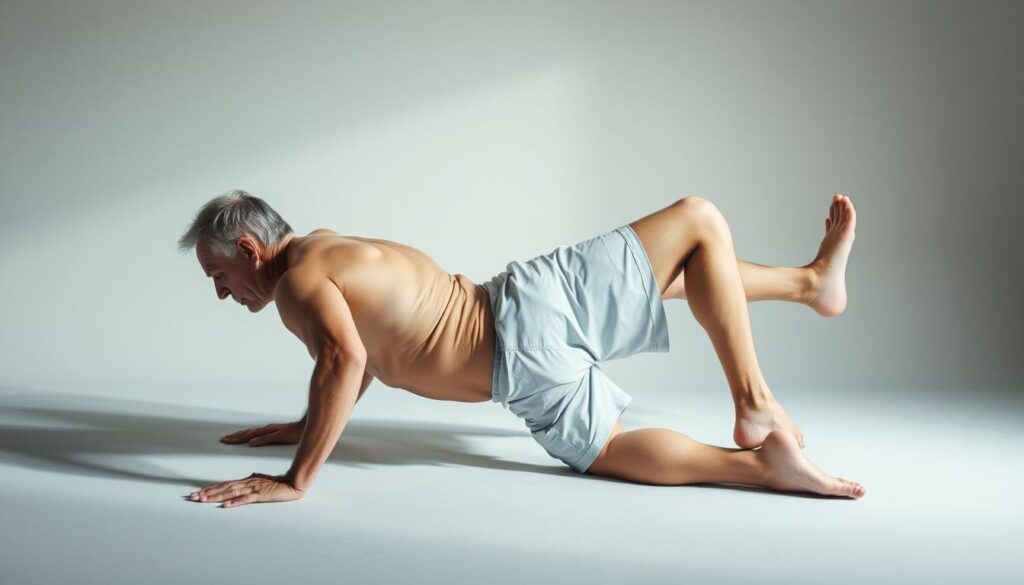
The secret to pain-free core work? It’s all in the setup. I’ve seen too many clients sabotage their progress by rushing into moves without nailing their stance first. Let’s fix what happens before the first rep—your form’s make-or-break moment.
Fine-tuning starting positions for safe execution
Start every exercise like you’re posing for a posture photo. Feet hip-width apart? Check. Shoulders stacked over hips? Double-check. Research shows proper alignment reduces spinal pressure by 42% during core moves. Here’s my go-to checklist:
| Move | Setup Tip | Time Progression | Form Cue |
|---|---|---|---|
| Modified Plank | Knees bent, elbows under shoulders | 15s → 30s | Belly button to spine |
| Seated March | Feet flat, grip chair sides | 3s hold per lift | Shoulders away from ears |
| Side Lean | Stack knees at 90°, fingertips behind ears | 20s per side | Ribs closed like a book |
Use a microwave timer—seriously. Start with 10-second holds, adding 5 seconds weekly. If your legs start shaking, widen your stance an inch. That tiny shift transfers effort from your back to your core muscles where it belongs.
Pro tip: Pretend you’re balancing a teacup on your head during seated moves. Sounds silly, but it keeps your spine neutral. And if you catch yourself holding your breath? You’re trying too hard—ease up and let your muscles do the work!
Step-by-Step Guide to Crafting a Custom Core Routine
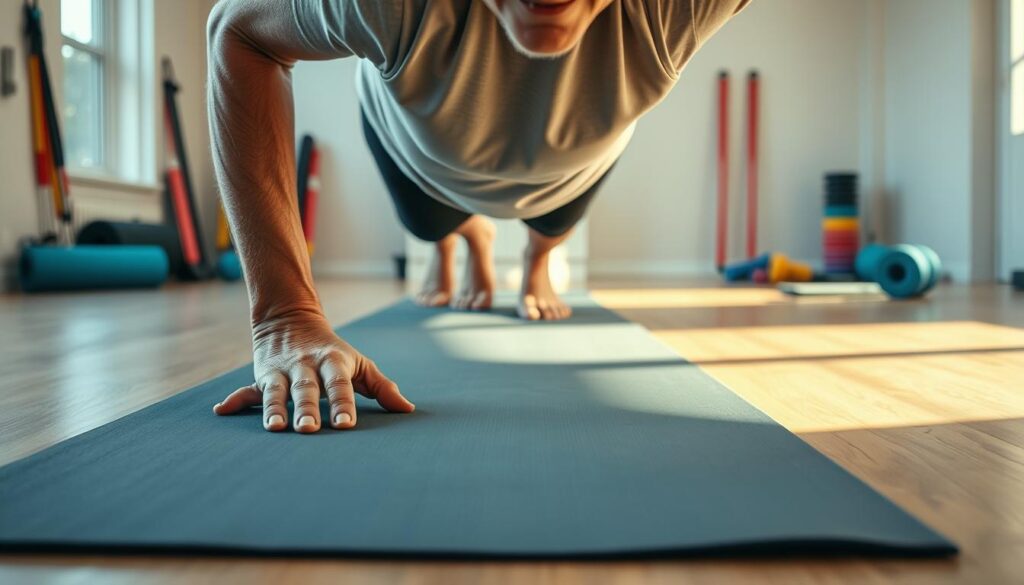
Building a core routine is like tailoring a suit—it should fit your body’s quirks perfectly. Start with this simple truth: Your kitchen timer holds more power than any gym membership. Here’s how to design a plan that grows with you.
Timing Tweaks That Talk Back
Grab a chair and sit tall. Lift your right knee an inch—hold for 5 seconds while whispering your grocery list. Feel your lower back pressing into the seat? That’s your body giving real-time feedback. Increase duration by 3-second increments weekly. Trust me, racing against the clock beats counting reps any day.
| Exercise | Starting Position | Time Adjustment | Form Focus |
|---|---|---|---|
| Seated Knee Lifts | Feet flat, bent knees | 5s → 12s | Belly button to spine |
| Modified Plank | Elbows under shoulders | 15s → 30s | Arms at 90° angle |
| Chair-Assisted Side Bends | Hands on seat | 10s/side → 20s | Feet planted like tree roots |
Your Body’s Edit Button
Notice a twinge in your lower back during leg slides? Bend your knees wider—problem solved. Can’t hold a plank? Switch to chair-assisted leans. Your arms become natural support beams. Here’s my trick: Keep eyes locked on your belly button during moves. It’s like a built-in alignment checker!
Chronic pain warriors—listen up. If standard exercises feel rough, adjust your bent feet position. Turn toes out slightly to reduce hip strain. Progress isn’t about pushing through pain—it’s about smart pivots. Now go set that timer. Your core’s waiting for its custom-made workout!
Finishing Touches: Continuing a Dynamic Core Program
Your core journey isn’t about checkboxes—it’s a living, breathing practice that reshapes itself as you grow. Think of it like tending a garden: strength blooms when you nurture it with smart tweaks and fresh challenges. Research shows maintaining trunk stability can slash fall risks by 40% in active adults. Now that’s what I call longevity insurance!
Keep things spicy by shifting your hands wider during chair planks or angling your knees outward in seated marches. These micro-changes fire up new muscle fibers without overhauling your routine. My go-to trick? Place a pillow between your pelvis and the chair back—it’s a sneaky way to maintain alignment while watching TV.
Always start with your starting position. Stack those joints like building blocks—knees over ankles, shoulders over hips. When doing side leans, imagine drawing a straight line from your ear to hip. This simple visual keeps your trunk engaged and protected.
Remember—progress hides in the margins. Could you hold that bridge three seconds longer? Shift your hands to the chair’s sides next week? Your body thrives on these gradual upgrades. The best part? Every tiny adjustment today makes reaching for grandkids tomorrow feel like second nature.
Now go play scientist with your routine. Test new angles. Listen to your pelvis. Celebrate the small wins. Your core’s not finished evolving—and neither are you.

